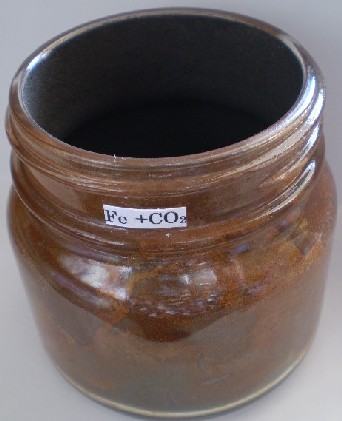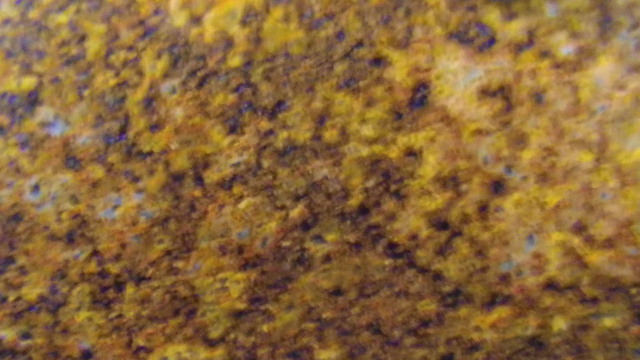to Former page to Next page
Chapter 6 The catalysis of silica for production of
the iron carbide bubble
6.1 The catalysis of silica for reduction of carbon dioxide
by oxidation of iron
6.1.a Oxidization of iron powder on the glass wall by carbon dioxide
The crust of earth is made of rocks. The principal component is silica of SiO2, i.e. the same as glass. The iron carbide bubble has the tendency to adhere on glass wall. So, effects of glass on the production of iron carbide bubble are investigated. Although oxidation of iron does not occur, when powder of iron puts in a glass container, oxidation of iron takes place at the glass wall, if powder of iron put together with carbon dioxide (CO2) in a glass container. Photographs of the iron oxide on the glass wall by the carbon dioxide are shown in Fig.31.


(a) Fe mixed with CO2 in a glass container (b) iron oxide on the glass wall
Fig.31 The iron oxide that was made on the glass wall by carbon dioxide
The reason that the oxide of iron is produced on the glass wall by dry ice is explained as follows. Oxygen atoms are put out at the surface of glass wall. The iron atom fit to oxygen atom more than carbon atom. Then, the iron atoms are arranged on the glass wall, and the electronic state of iron atom is adapted to the silica. The electronic state of iron is adjusted to SiO2 that is similar to CO2. The state of iron atom becomes fit to make reaction with carbon dioxide. The silica functions as a catalyst for the oxidization of iron by carbon dioxide.
6.1.b Catalysis of silica for production of the iron carbide bubble
In order to know how the silica affects to the production of the iron carbide bubble, the desert sand that is shown in Fig.32 (a) was added to the carbonated water which included iron powder. As shown in Fig.32 (b), (c), the iron carbide bubbles were produced a lot more than in the case without desert sand. Even in the carbonated water, the silica works as the function of the catalyst on oxidation of iron by carbon dioxide.
-6.1- to Index